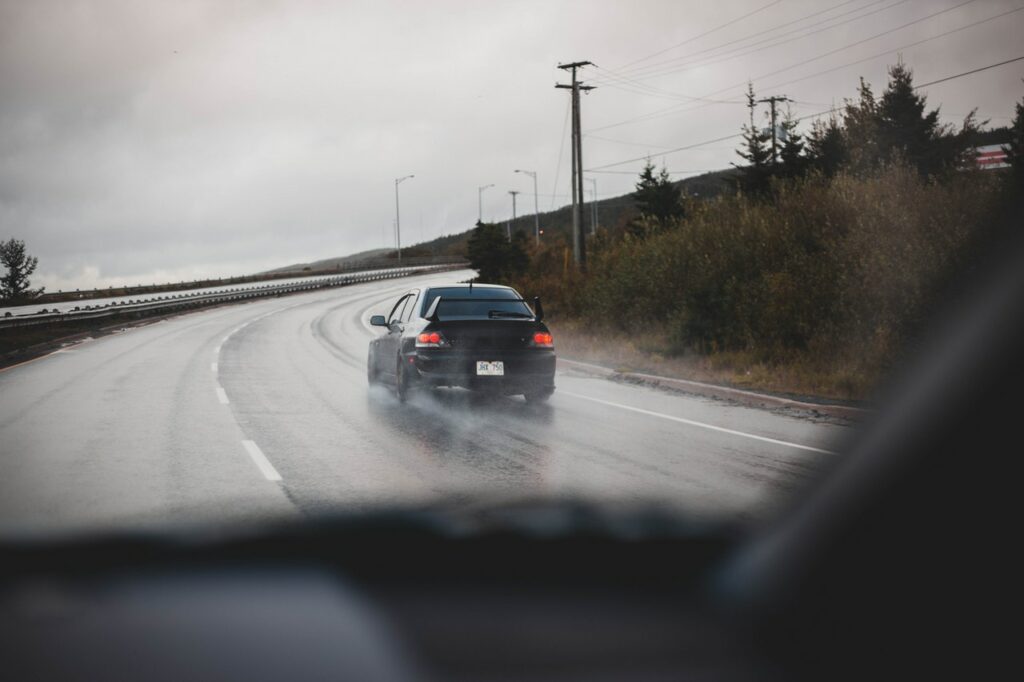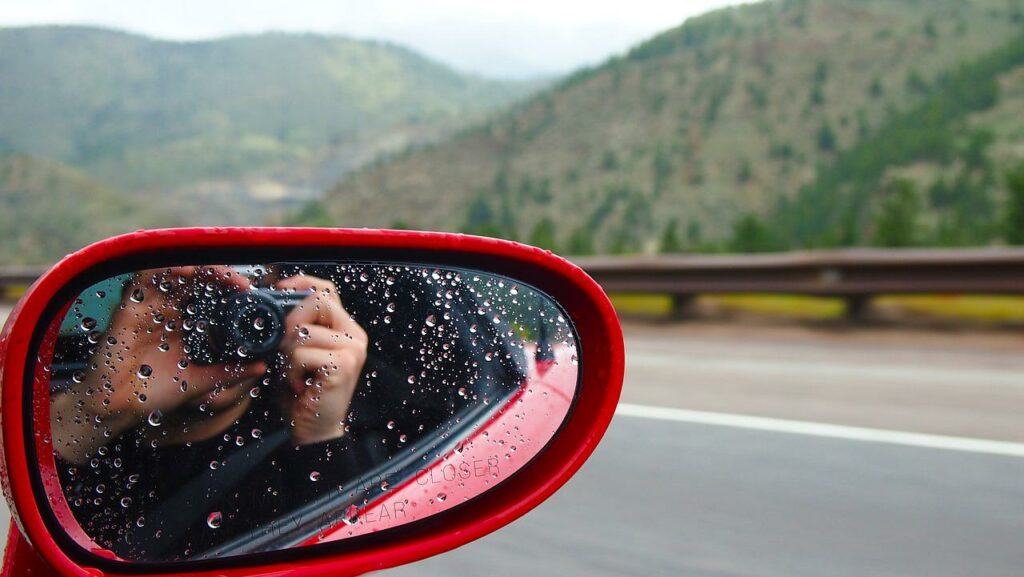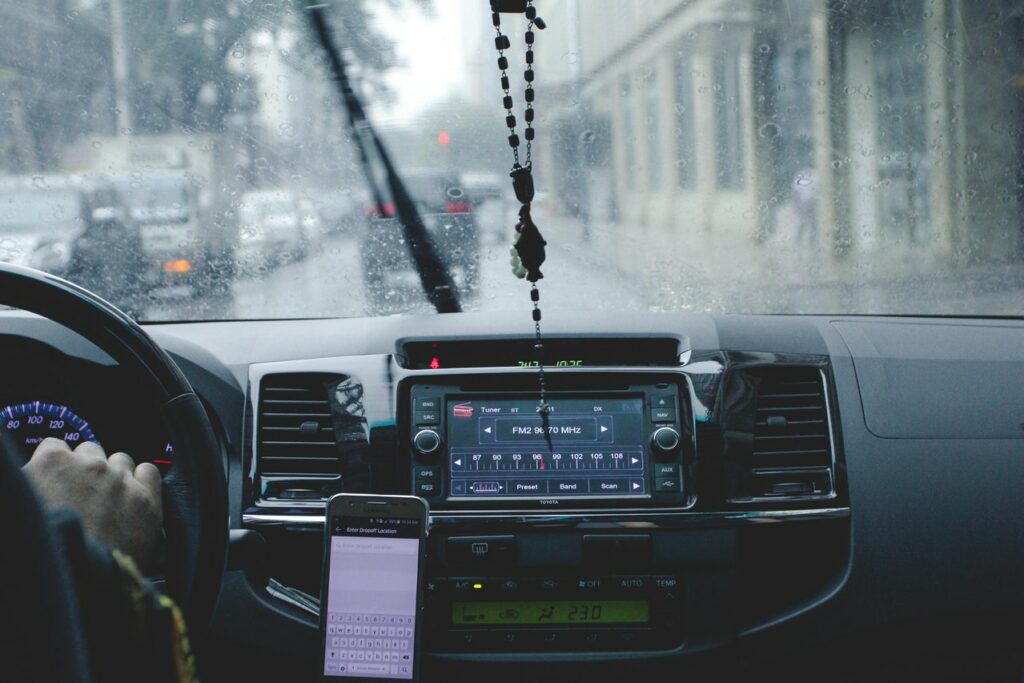If you’re driving and suddenly start to hydroplane, what should you do? Even if you’re an expert driver, hydroplaning can be a scary experience. Thus, Most drivers must change driving behaviors and take additional measures to stay safe on the road. Such as increasing stopping distance, reducing speed, and utilizing headlights.
You might have encountered a hydroplane if you’ve ever lost all car control while driving during rain. Here’s everything you need to know about preventing a skid and maintaining control of the car. Even if you’re driving during a moderate rain or a severe downpour.
What Exactly Is Hydroplaning?

Hydroplaning occurs when your car’s tires encounter more water than they can displace. The water pressure in front of the tire forces a wedge of water under the tire, and if enough water builds up, it can lift the tire off the road surface. You lose contact with the road when this happens, and your car starts to slide.
The car slides over the water’s surface. The driver might lose track of both braking and steering, posing a usually dangerous combination for both the vehicle’s passengers and nearby vehicles.
How Does Hydroplaning Happen?
Whenever the vehicle’s tires lose traction on a road surface and rather than move on a layer of water over it, it is known as hydroplaning. Hydroplaning makes it difficult for a driver to stop and maneuver. The combination of weight of the vehicle, tread depth, vehicle speed, and driving conditions causes hydroplaning. Let’s explore some of these factors more closely.
➜Vehicle Weight
In comparing two cars with much the same kind and size of tire, the heavier vehicle has a better chance of avoiding hydroplaning since it has more force to push water from beneath the tire.
➜Tire Tread Depth
The grooves on the tire’s surface area are designed to channel water away and provide traction on slippery surfaces. The deeper the tread, the more likely water will be displaced. New tires have deeper treads than older ones. Worn tires are more likely to hydroplane.
➜Speed
Tires require time to drain water from the space among road surfaces and threads. The faster you go, the less time you have. Hydroplaning may happen at speeds as low as 35 mph, dependent on the tire tread depth and pattern and the volume of water on the roadway.
The faster a vehicle goes, the more likely it is to hydroplane. When tires are moving quickly, they have less time to displace water.
➜Driving Conditions
The severity of hydroplaning is affected by different driving conditions. The water depth and how much oil has been deposited on the pavement play a significant role.
Oil and other substances can build up on the roadway over time and form a thin layer. Water will not penetrate this layer but will instead ride over it. If there is enough water, this can cause hydroplaning.
When the temperature is colder, rain falls in larger drops, and puddles form more quickly. Therefore, the same amount of precipitation will cause more problems in cold weather than in warm weather.
If You Start to Hydroplane, What Should You Do?

If your car loses traction on the road for a brief period, which is what causes hydroplaning extremely dangerous. So if you start to hydroplane, what should you do? Here are some tips on what you should do if this happens to you:
Slow Down and Remain Calm
If you find yourself in a situation where your car starts to hydroplane, the best thing to do is to remain calm and ease your foot off the gas pedal. Do not brake suddenly or make sudden turns, as this could cause you to lose control of the vehicle.
Maintain a tighter grip on the steering wheel and move the vehicle in the right direction.
Break Carefully
To determine how you will decelerate in this case, you must first determine if your vehicle has anti-lock or standard brakes. If your brakes are regular, mild releases instead of constant pressure can be used.
If the vehicle has anti-lock brakes, as most all current vehicles have, you could take a brake naturally (not slam the brakes!). You must start to slow down when the tires contact the road again.
Get Control of the Vehicle
If you feel like you are losing control of the vehicle, gently turn in the direction that your car is skidding. It will help regain traction on all four tires and give you more control over your car. Once you have regained control of the vehicle, slowly begin to accelerate and continue driving cautiously.
Keep an Eye on Traffic
The most important thing to do if you start to hydroplane is to keep an eye on traffic. If there are vehicles around you, make sure that you know their locations.
It will help you if you need to make a sudden stop or lose control of the vehicle and need to veer off the road. It is also important to be aware of vehicles behind you if they need to take evasive action.
Pull Over in a Safe Place if Needed
If you are unable to regain control of the vehicle or if you do not feel safe continuing to drive, pull over to the side of the road in a safe place. Turn on your hazard lights once you have to pull over and call for help.
Hydroplaning can be a scary experience, but if you remain calm and follow these steps, you will be able to get your vehicle under control and back on the road. Just remember to drive safely and always be prepared for unexpected situations!
Preventing a Hydroplane to Happen

In order to prevent hydroplaning from happening, prevention is key. You might think that there is not much you can do to prevent hydroplaning, but there are actually a few things:
❕Avoid Cruising Control
One of the best ways to avoid hydroplaning is to avoid using cruise control when driving in wet conditions. When you use cruise control, your car maintains a constant speed which can cause your tires to lose contact with the road if you hit a puddle of water.
So if you find yourself driving in heavy rain or on a wet road, it is best to turn off cruise control.
❕Increase Following Distance
Another way to prevent hydroplaning is to increase your following distance. It will give you more time to brake if you hit a puddle of water and start to hydroplane.
It is recommended that you increase your following distance by three times when driving in wet conditions.
❕Reduce Speed
The best way to prevent hydroplaning is to reduce your speed. When you drive slower, you have more time to react if you hit a puddle of water, and it also reduces the chance of your tires losing contact with the road.
❕Avoid Standing Water and Puddles
Beware of any road area in which you can notice the water has pooled. A thin coating of water causes hydroplaning. If you can detect standing water, your car is very prone to hydroplane as it passes over it.
If you cannot avoid it, then drive even slower than the recommended speed limit to give yourself more time to react. You use your windshield wipers to help give you a better view and if the water is too heavy, consider pulling over until the rain subsides.
❕Balance Tire and Rotate Regularly
Maintaining the condition of the tires could also assist you in preventing hydroplaning in rainy conditions. Every other time you get a change oil, around each 7 to 1000 miles, you should have the vehicle’s tires rotating and balancing. It will keep the treads even and help to improve traction on the road.
❕Flatten Your Tires
If you live in an area that rains frequently, you might want to consider flattening your tires. It will increase the tire’s surface area in contact with the road and improve traction. Just be sure to inflate your tires back to the proper pressure before driving on dry roads!
❕Don’t Travel During Storm
If you can wait until the rain subsides or take another form of transportation. Driving in heavy rains increases your chance of hitting a puddle of water and starting to hydroplane. So if you can avoid driving in the rain, it is best to do so.
❕Avoid Flooded Roads
Never try to drive through a flooded road. The water might look shallow, but you never know how deep it actually is. If the water is too deep, your car can start to float, and if you are stranded in the middle of a flooded road, you could be at risk of drowning.
So if you see a flooded road ahead, it is best to turn around and find another route.
❕Turn Headlights On
In some states, it is actually in the laws and regulations to turn your headlights on when the wipers are used. It increases other drivers’ visibility and makes your car more visible. When your car is more visible, it decreases the chance of another driver hitting you if they start to hydroplane.
❕Stay Within Your Lane
Weaving in and out of traffic could cause you to hit a deeper puddle of water than the one in your lane. It could cause you to start hydroplaning and lose control of the vehicle.
❕Keep Your Car Maintenance Up to Date
Making sure your car is regularly maintained will help to prevent hydroplaning. When you get regular oil changes and tune-ups, it helps to keep your car running smoothly. It also includes ensuring that your tires are properly inflated and have enough tread.
❕Eliminate Any Distractions
When driving in wet conditions, it is essential to be extra cautious. It means eliminating any distractions so that you can focus on the road. Things like putting away your phone, adjusting the radio, or eating should wait until you are stopped.
By following these tips, you can help to prevent hydroplaning and keep yourself and others safe on the road.
Tires Design to Minimize the Risks of Hydroplane
Since tires are intended to deliver efficiency, which corresponds with an owner’s priorities and the demands of its vehicle, tread designs vary significantly. Consider the following:
Performance Tires
These tires are designed to offer the highest grip and steering response possible. They typically provide only average tread life and all-season traction, if any. The “All-Season” or “Summer” versions of performance tires are available, focusing on the optimum grip while braking, accelerating, and cornering. Both are hydroplane-resistant. However, only the All-Season variants are suitable for use in cold environments.
Touring Tires
Touring tires are designed to provide a balance of good tread life, all-season traction, and a comfortable ride. While not as adept as performance tires when cornering or braking, they are considerably more resistant to hydroplaning.
Thus, touring tires are built with tire patterns with extra features called sipes and slots to assist offer grip in wet and snowy weather. The sipes are tiny slits in the tread that increase the number of edges that contact the road. The slots are channels that help evacuate water from beneath the tire’s footprint.
Yes, hydroplaning may be frightening for drivers. If you are ready (including installing the proper tires) and exercise safe driving methods, you and your vehicle can come out unscathed.
Frequently Asked Questions
Q: What are the risks of hydroplaning?
There are a few risks associated with hydroplaning, the most serious of which is losing control of your vehicle. When your tires lose contact with the road, you can no longer steer or brake effectively, leading to dangerous accidents. Hydroplaning can also cause damage to your tires and suspension and, in severe cases, can even cause your engine to overheat.
To avoid hydroplaning, make sure to keep your tires properly inflated and spend extra time braking when driving on wet roads. If you start to hydroplane, gently ease off the accelerator and do not brake suddenly – this will help you regain control of your vehicle. Drive cautiously on wet roads and be aware of the potential dangers.
Roads are slipperiest when they’re first wet, so be extra careful during the first 10 minutes after it rains. Drive slower than you normally would and give yourself plenty of following safe distance between you and the car in front of you.
Q: What safety features can I use when driving in the rain?
When driving in the rain, you should use your headlights and taillights. You should also use your windshield wipers and defroster to keep your windshield clean and clear. In addition, you can use lane markings to help guide you through the rain. Ensure your tires have enough tread to grip the road in wet weather. Finally, drive slowly and carefully to avoid hydroplaning.
Q: What type of tire is best for hydroplane resistance?
Touring tires are the best type of tire for hydroplane resistance. They are designed to provide a balance of good tread life, all-season traction, and a comfortable ride. Touring tires are built with tire patterns with extra features called sipes and slots to offer grip in wet and snowy weather. The sipes are tiny slits in the tread that increase the number of edges that come into contact with the road. The slots are channels that help evacuate water from beneath the tire’s footprint.
Q: Does hydroplaning occur only on wet roads?
No, hydroplaning can also occur on dry roads. Hydroplaning is a condition that happens when your car’s tires lose contact with the road and start to ride on top of a thin film of water. When this happens, you have no control over your car, and it will just keep going straight until you hit something or until the water dissipates.
Hydroplaning can happen on wet or dry roads, but it’s most common on wet roads because the water creates a smooth surface for the tires to glide on. It’s important to be extra careful when driving in wet weather conditions and drive slowly and leave plenty of space between you and the car in front of you. If your car starts to hydroplane, gently ease off the accelerator and do not brake suddenly – this will help you regain control of your vehicle.
Q: How can I stay safe if I start to hydroplane?
The best way to stay safe when hydroplaning is to be aware of the conditions that can lead to it and drive cautiously. Hydroplaning can occur when there is a lot of water on the road, and the tires have trouble gripping the surface. It can also happen if you drive too fast for the conditions or if your tires are worn out.
If you are driving in heavy rain, on a wet road, or in any other condition where there is a lot of water present, be sure to slow down and drive carefully. You don’t want to risk losing control of your vehicle and causing an accident.
If you do start to hydroplane, don’t panic. Keep your steering wheel straight and look ahead to where you want to go. Gently ease off the accelerator and do not brake suddenly – this will help you regain control of your vehicle. Drive cautiously on wet roads and be aware of the potential dangers.
Final Thoughts
Hydroplaning can be a dangerous condition, but if you are aware of the conditions that lead to it and drive carefully, you can avoid it. If you do start to hydroplane, don’t panic! Follow the tips above, and you’ll be back on solid ground in no time. Above all, always be cautious when driving in wet weather and leave plenty of space between you and the car in front of you. Stay safe on the roads!

